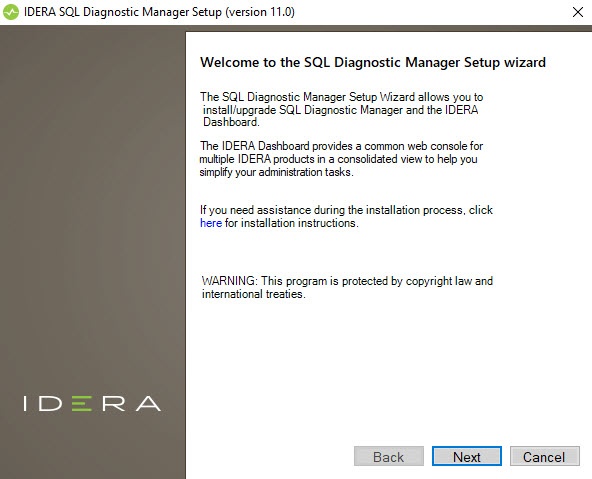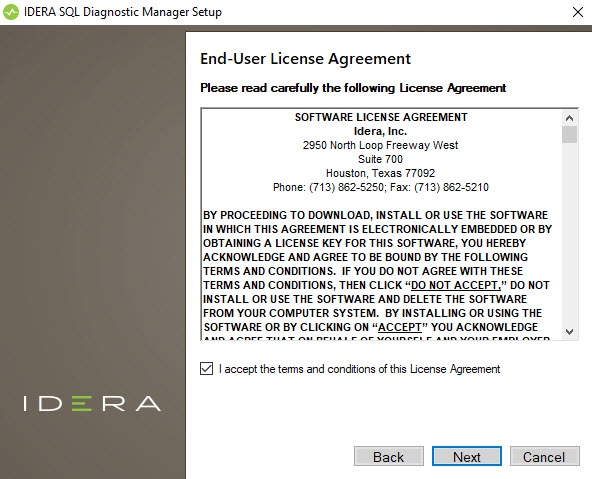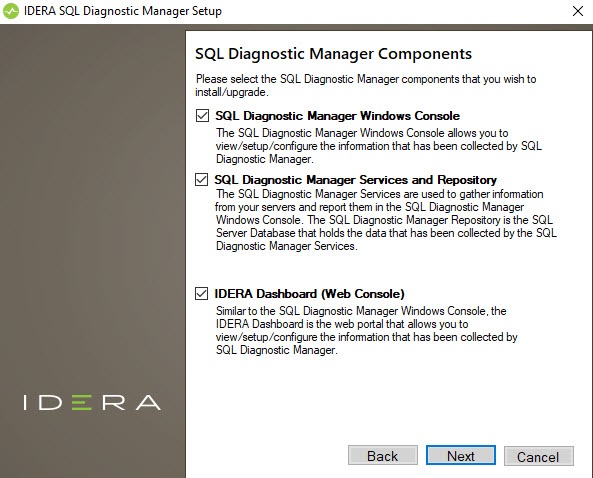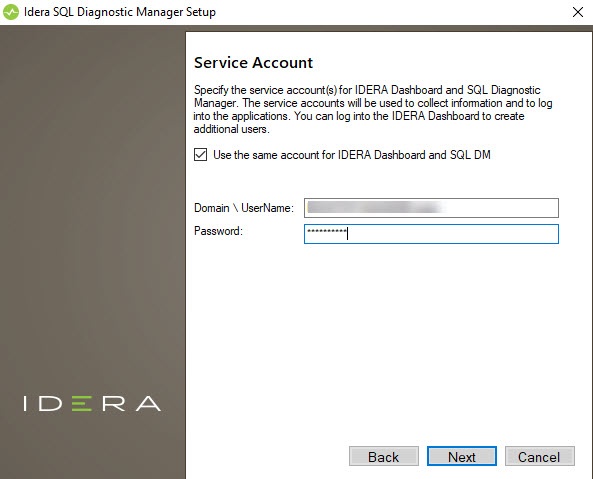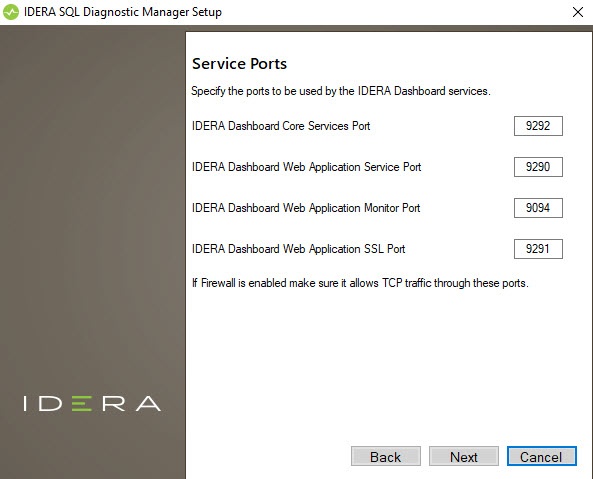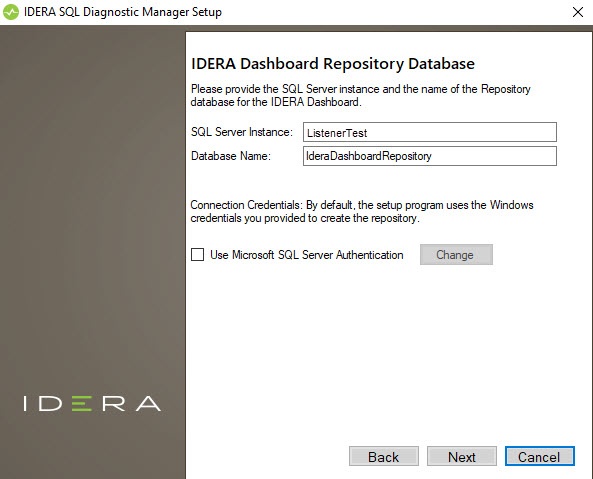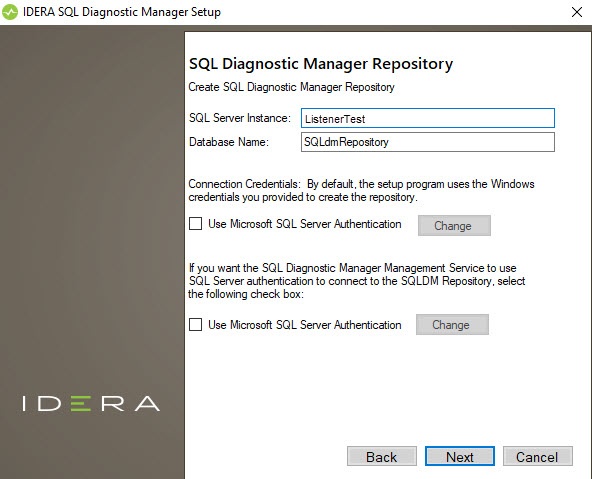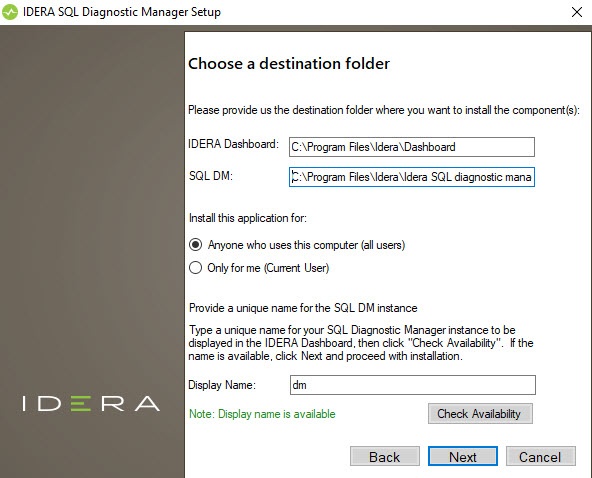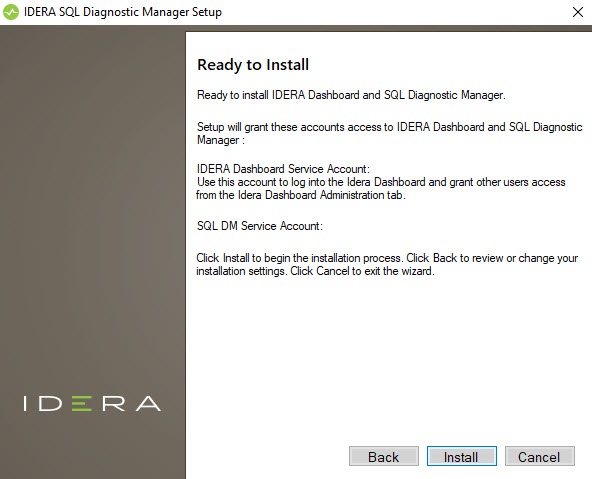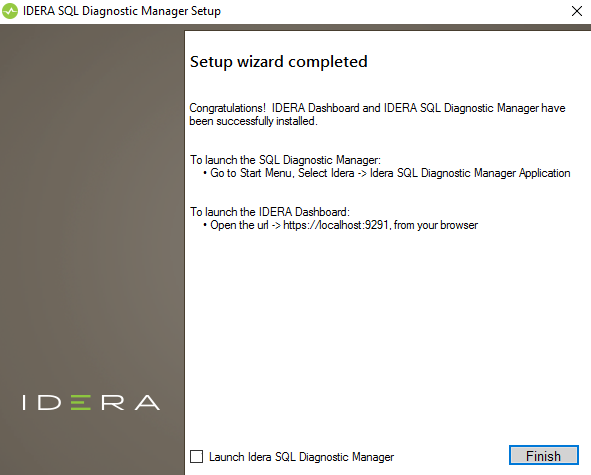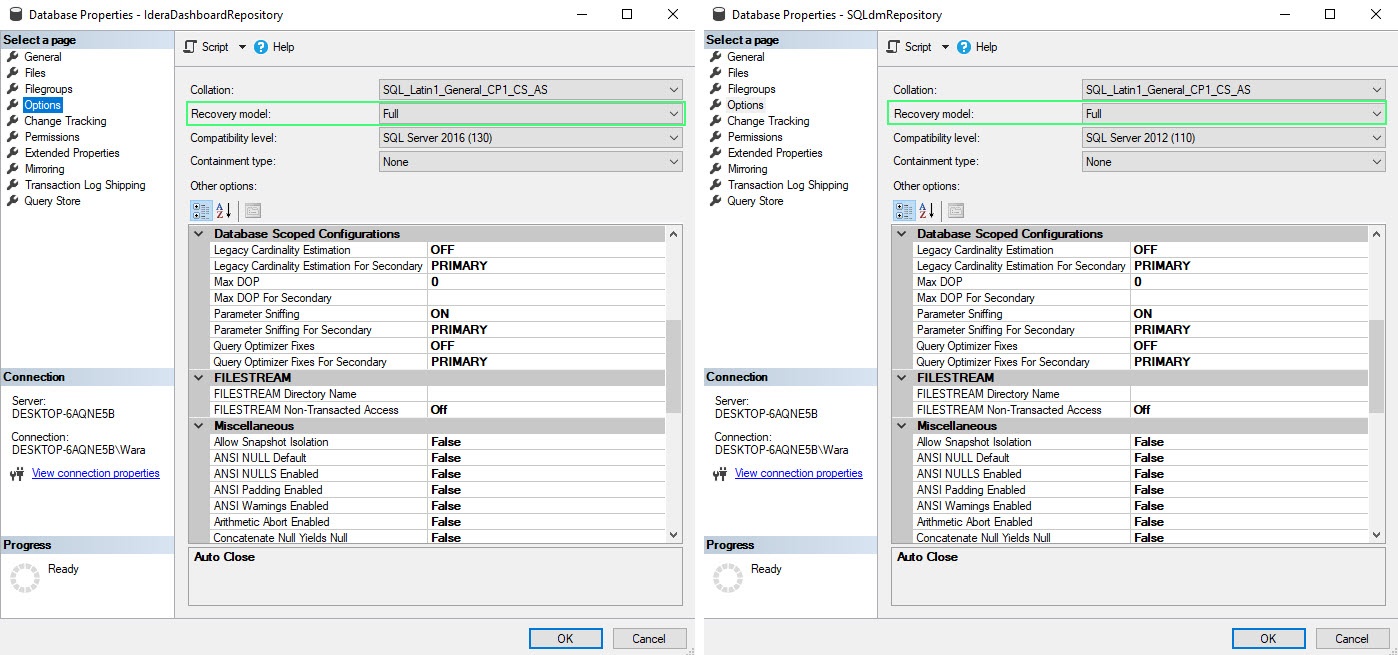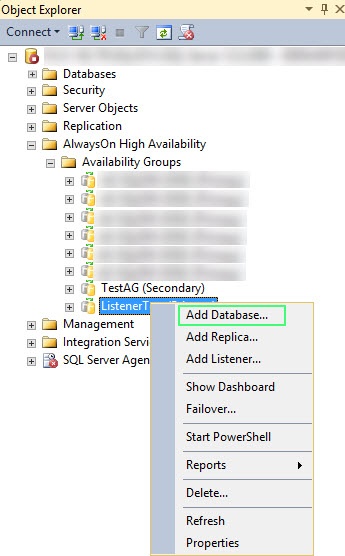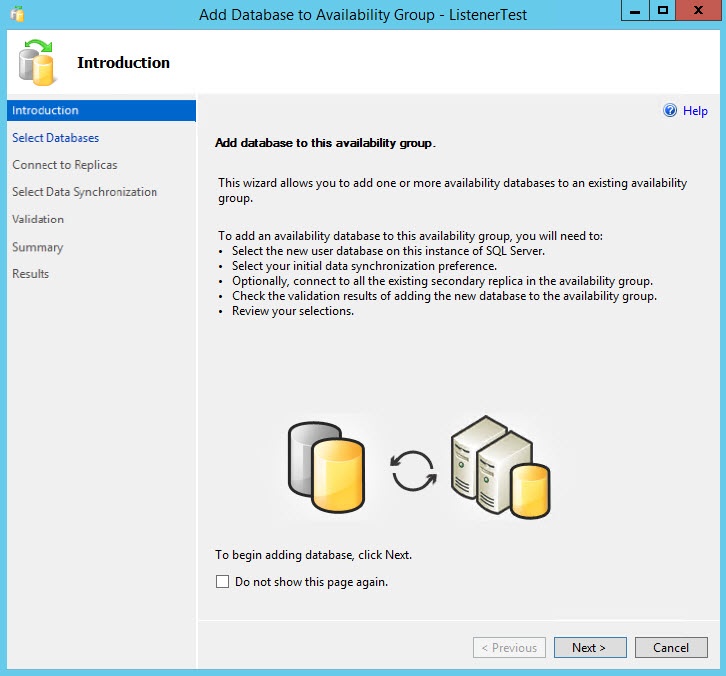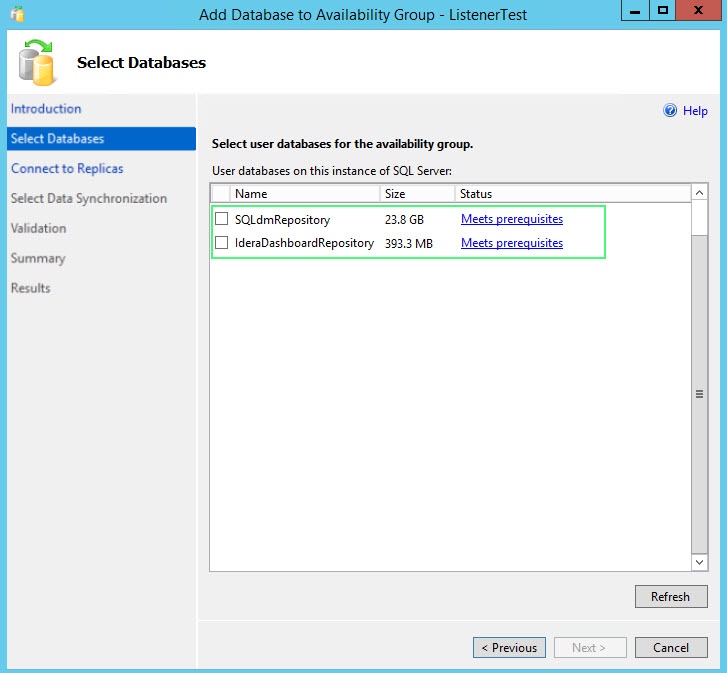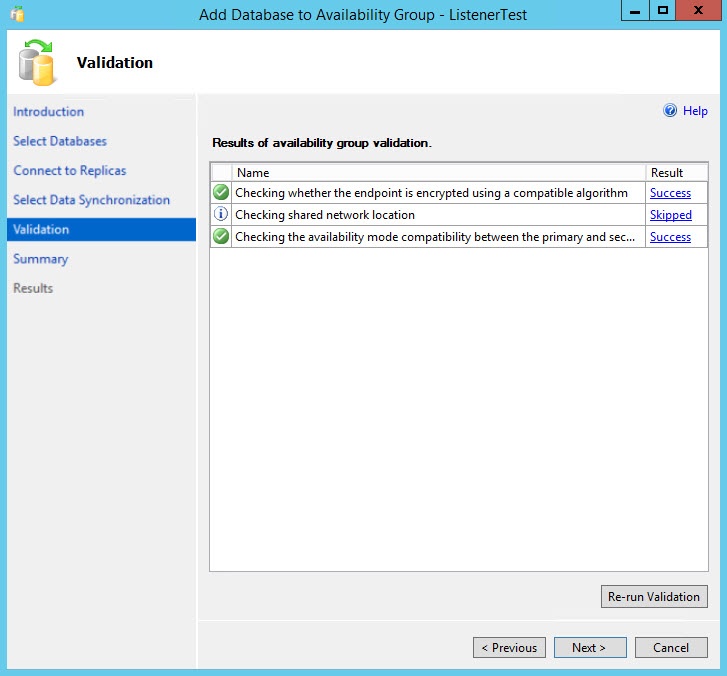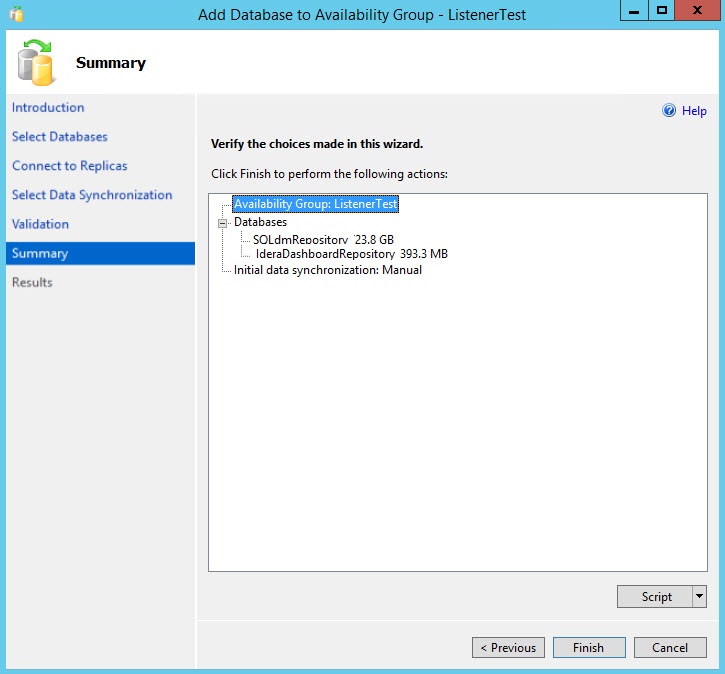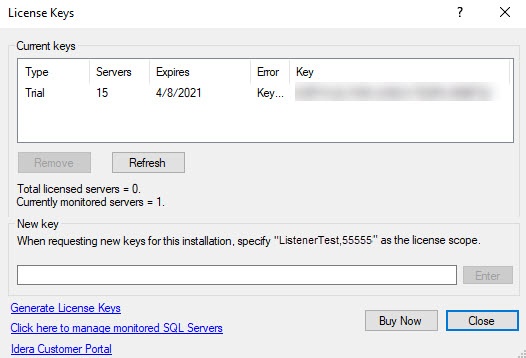Page History
This procedure guides The following steps guide you through the installation of installing and deployment of SQL Diagnostic Manages and the IDERA Dashboard while hosting the repository databases in an AlwaysOn environment.
| Table of Contents | ||||
|---|---|---|---|---|
|
Install SQL Diagnostic Manager in
...
an AlwaysOn Environment
- In the IDERA SQL Diagnostic Manager Quick Start window, click Install SQL Diagnostic Manager.
- In the Welcome to the SQL Diagnostic Manager Setup Wizard screen, click Next.
- Accept the terms and conditions of the End-User License Agreement, and click Next.
- Select the SQLDM Console, SQLDM Services and Repository, and the IDERA Dashboard components and click Next.
- Enter the credential to be used by the IDERA services and click Next.
- Review the ports that are to be used by the IDERA Dashboard services and click Next.
- In the IDERA Dashboard Repository Database screen specify the listener name and database name and click Next.
- Specify the listener name and database name for the SQL Diagnostic Manager Repository Database and click Next.
- Provide the installation directory for the IDERA Dashboard and SQL Diagnostic Manager, enter a Display name, check the availability of the name, and click Next.
- If the specified paths do not exist on the system, the following window prompts. Click Yes to proceed.
- Click Install to start the installation.
- After the installation has completed, disable the Launch IDERA SQL Diagnostic Manager checkbox and click Finish.
Configure the Databases for High Availability
- Open SQL Server Management Studio (SSMS) on the primary node and connect the listener name.
- Set the Recovery Model of the IderaDashboardRepository and SQLdmRepository databases to Full.
- Perform a full backup of the IderaDashboardRepository and SQLdmRepository databases.
- Right-click the appropriate availability group and select Add Database...
- On the Introduction screen of the Add Database to Availability Group wizard, click Next.
- On the Select Database tab, select the IderaDashboardRepository and SQLdmRepository databases, and click Next.
- On the Connect to Replicas tab, connect to the other replica(s) in the availability groups by clicking Connect... next to the Server Instances, and click Next.
- On the Select Data Synchronization tab, select one of the following options for your environment, and click Next.
- Automatic Seeding
- Full database and log backup
- Join only
- Skip initial data synchronization
- On the Validation screen, ensure that all tests are successful and click Next.
- On the Summary screen, verify the actions you selected in the previous steps, and click Finish.
- The Results screen displays the summary of the performed actions and their results, click Close to exit the wizard.
- In SSMS connect to the secondary replica(s) and ensure that the databases were added successfully.
- On the server where SQL Diagnostic Manager is installed, restart the services listed below:
- IDERA Dashboard Core Service
- IDERA Dashboard Web Service
- SQLdm Collection Service
- SQLdm Management Service
- SQLdm Predictive Analytics Service
- SQLdm Rest Service
Validate SQL Diagnostic Manager configuration
- To validate the SQL Diagnostic Manager configuration, launch the Desktop Client.
- Go to > Manage License. In the New Key section, you should see the name of the listener and the port instead of the primary node name.
If you see the listener and port as shown in the image above, you have successfully configured the repository databases in an availability group
| Tip |
|---|
Make sure to restart the SQL Diagnostic Manager services, apply the newly-generated license using the Manage Licenses button before attempting to apply the license directly using the Management Console or you may encounter issues. |
- Deploy the SQL Diagnostic Manager Repository targeting a node that is part of an availability group. For example,
Node 1\Instance A. - Move the SQL Diagnostic Manager Repository to an availability group in the primary replica with Listener Y and port 300 (as example). To review how to create an availability group, see Microsoft document Creating and Configuring a New Availability Group.
- A new license key for Listener Y, Port 300 is required. See Capturing an availability group's listener name and port designation to send your request to IDERA Sales. Using the SQLdm Management Service Configuration wizard modify the target repository to Listener Y, port 300.
- Upon opening the SQL Diagnostic Manager Console, the system recognizes that you are trying to access the selected node without the proper license and throws an error message.
- Click the Manage Licenses button of the error message and type the new license for Listener Y, Port 300. Open the SQL Diagnostic Manager Console, go to Help > Manage Licenses in the Toolbar menu, and the License Keys window displays. Type the new license key in the available space, and then click Enter.
Save changes, and then restart the SQL Diagnostic Manager services. This process takes approximately 5 minutes.
